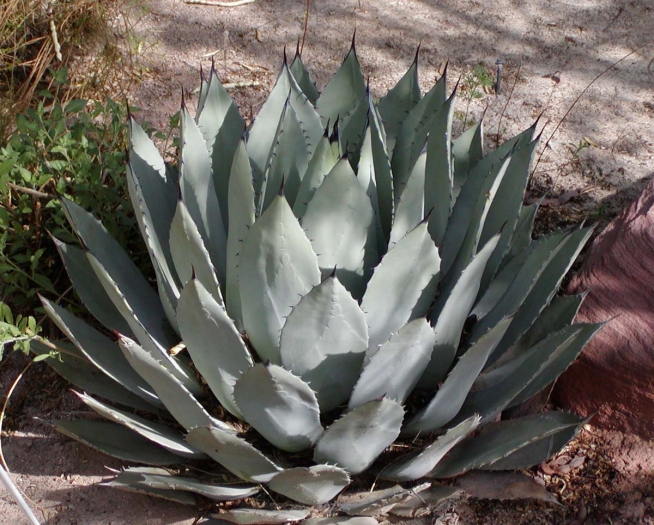Palmer’s Century Plant
(Agave palmeri)
Palmer’s Century Plant (Agave palmeri)
/
/

Stan Shebs
CC BY-SA 3.0
Image By:
Stan Shebs
Recorded By:
Copyright:
CC BY-SA 3.0
Copyright Notice:
Photo by: Stan Shebs | License Type: CC BY-SA 3.0 | License URL: https://creativecommons.org/licenses/by-sa/3.0 | Uploader: Stan Shebs | Publisher: Wikimedia Commons | Title: Agave_palmeri.jpg | Notes: |




















































Estimated Native Range
Summary
Agave palmeri, commonly known as Palmer’s Century Plant, is an evergreen succulent native to the arid and semi-arid regions of the Southwestern United States and Mexico, particularly thriving in desert scrub, grasslands, and oak woodlands. It is the largest Agave species in the United States. This plant forms a striking basal rosette of fleshy, upright green leaves that can reach up to 120 cm (4 ft) in length, with marginal teeth and terminating in formidable spines of 3–6 cm (1.2–2.4 inches) long. The pale yellow and green flowers are 1.6–2 inches long and appear on panicles in the upper third of a towering flower spike, which can reach up to 5 m (16.5 feet) tall, during its once-in-a-lifetime bloom at maturity.
Palmer’s Century Plant is valued for its dramatic architectural form and is often used as a focal point in xeriscapes and desert gardens. It is also suitable for large containers in urban settings. Its drought tolerance and low water requirements make it an excellent choice for water-wise gardening. While it can withstand temperatures around –10 °C, it prefers warmer climates and should be protected from frost. Full sun exposure and well-draining soil are essential for optimal growth. This plant is generally low-maintenance but can be susceptible to agave snout weevil infestations, which can be mitigated by proper care and monitoring.CC BY-SA 4.0
Palmer’s Century Plant is valued for its dramatic architectural form and is often used as a focal point in xeriscapes and desert gardens. It is also suitable for large containers in urban settings. Its drought tolerance and low water requirements make it an excellent choice for water-wise gardening. While it can withstand temperatures around –10 °C, it prefers warmer climates and should be protected from frost. Full sun exposure and well-draining soil are essential for optimal growth. This plant is generally low-maintenance but can be susceptible to agave snout weevil infestations, which can be mitigated by proper care and monitoring.CC BY-SA 4.0
Plant Description
- Plant Type: Succulent
- Height: 3-4 feet
- Width: 3-6 feet
- Growth Rate: Slow
- Flower Color: Green, Yellow
- Flowering Season: Spring, Summer
- Leaf Retention: Evergreen
Growth Requirements
- Sun: Full Sun
- Water: Very Low
- Drainage: Fast
Common Uses
Bee Garden, Bird Garden, Butterfly Garden, Drought Tolerant, Fire Resistant, Hummingbird Garden, Low Maintenance, Rabbit Resistant, Rock Garden, Showy Flowers, Street Planting
Natural Habitat
Native to desert scrub, grasslands, and oak woodlands
Other Names
Common Names: Palmer’s Agave, Palmer Century Plant, Maguey De Tlalcoyote
Scientific Names: , Agave palmeri,
GBIF Accepted Name: Agave palmeri Engelm.